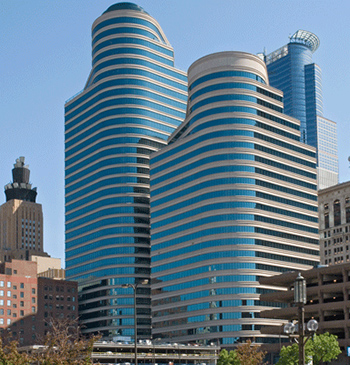Minneapolis Ranks First in Green Building
 LOS ANGELES — Minneapolis is outpacing other U.S. cities for green commercial space and green commercial real estate. According to a study from CBRE Group and Maastricht University, almost 30 percent of all buildings and 77 percent of square footage built in the city between 2005 and 2013 qualified as green.
LOS ANGELES — Minneapolis is outpacing other U.S. cities for green commercial space and green commercial real estate. According to a study from CBRE Group and Maastricht University, almost 30 percent of all buildings and 77 percent of square footage built in the city between 2005 and 2013 qualified as green.
The 2014 Green Building Adoption Index examined the top 30 cities with the greatest square footage and found adoption rates overall of green standards have skyrocketed nationwide; the number of Energy Star-labeled buildings jumped nearly 600 percent, and the proportion of buildings that are LEED certified increased from less than 0.5 percent to 5 percent.
The index is the first project to come under CBRE’s Real Green Research Challenge, a $1 million initiative launched in 2012 to fund sustainability research and innovation in commercial real estate. Dr. Nils Kok at Maastricht University of the Netherlands, in collaboration with the U.S. Green Building Council (USGBC) and CBRE, led the study, which used EPA, Energy Star, USGBC and LEED statistical data from 2005 to 2013. The research included more than 34,000 buildings.
“We have all seen the rapid growth in the number of green-certified buildings in the markets in which we work; however, we were quite surprised to see how large the numbers actually are. Green is absolutely the new norm,” said Dave Pogue, CBRE’s global director of corporate responsibility, in a statement. “We wanted to do something in the built environment to help advance the discussion of sustainability. With the Real Green Research Challenge, we have the opportunity to affect the entire real estate industry and have a lasting effect on the way real estate is built, occupied and financed, and in doing so be a force for positive environmental change.”
The clear-cut leader in the rankings, Minneapolis boasts 135 certified buildings, representing more than 152 million square feet of office space. The city has nearly twice the national average of green office space at 39.3 percent.
Minneapolis also nabbed the leading position in Energy Star-label categories, with 22.9 percent of buildings and 62.8 percent of square footage earning the distinction. Additionally, the market leads in LEED certification categories, with 12.1 percent of buildings and 39.4 percent of space certified.
According to the study, the increasing adoption of green-building standards is likely the result of several factors, including active implementation of energy efficiency programs by most large institutional owners across very large portfolios. The programs aim to reduce operating costs and show a genuine interest in demonstrating environmental stewardship to investors. At the same time, LEED certification has emerged, and participation and recognition in Energy Star has greatly expanded.
“This is the first study to quantify the relevance of green-building practices in the commercial real estate market,” said Kok in a statement. “While we all know examples of LEED-certified buildings, the results presented here are facts based on a robust methodology, not anecdotal evidence. The evidence shows that green has become mainstream in all major U.S. cities.”
Top 10 Greenest Cities
• Minneapolis/St. Paul
• San Francisco
• Chicago
• Houston
• Atlanta
• Los Angeles
• Denver
• Seattle
• Miami
• Washington, D.C.
